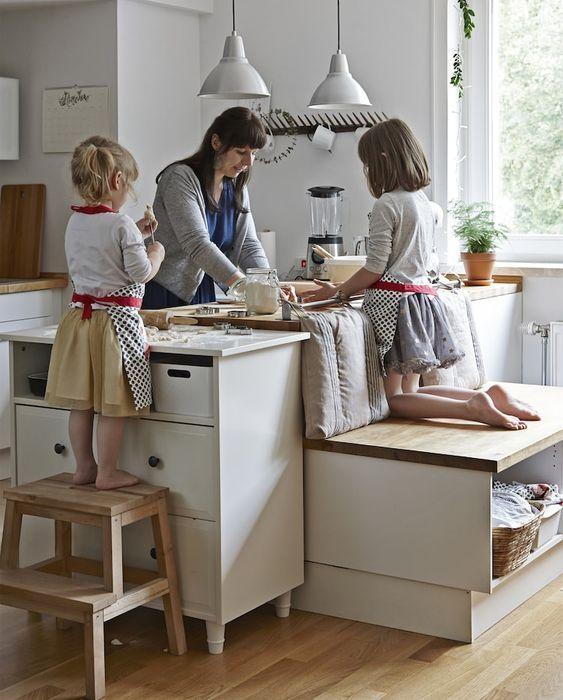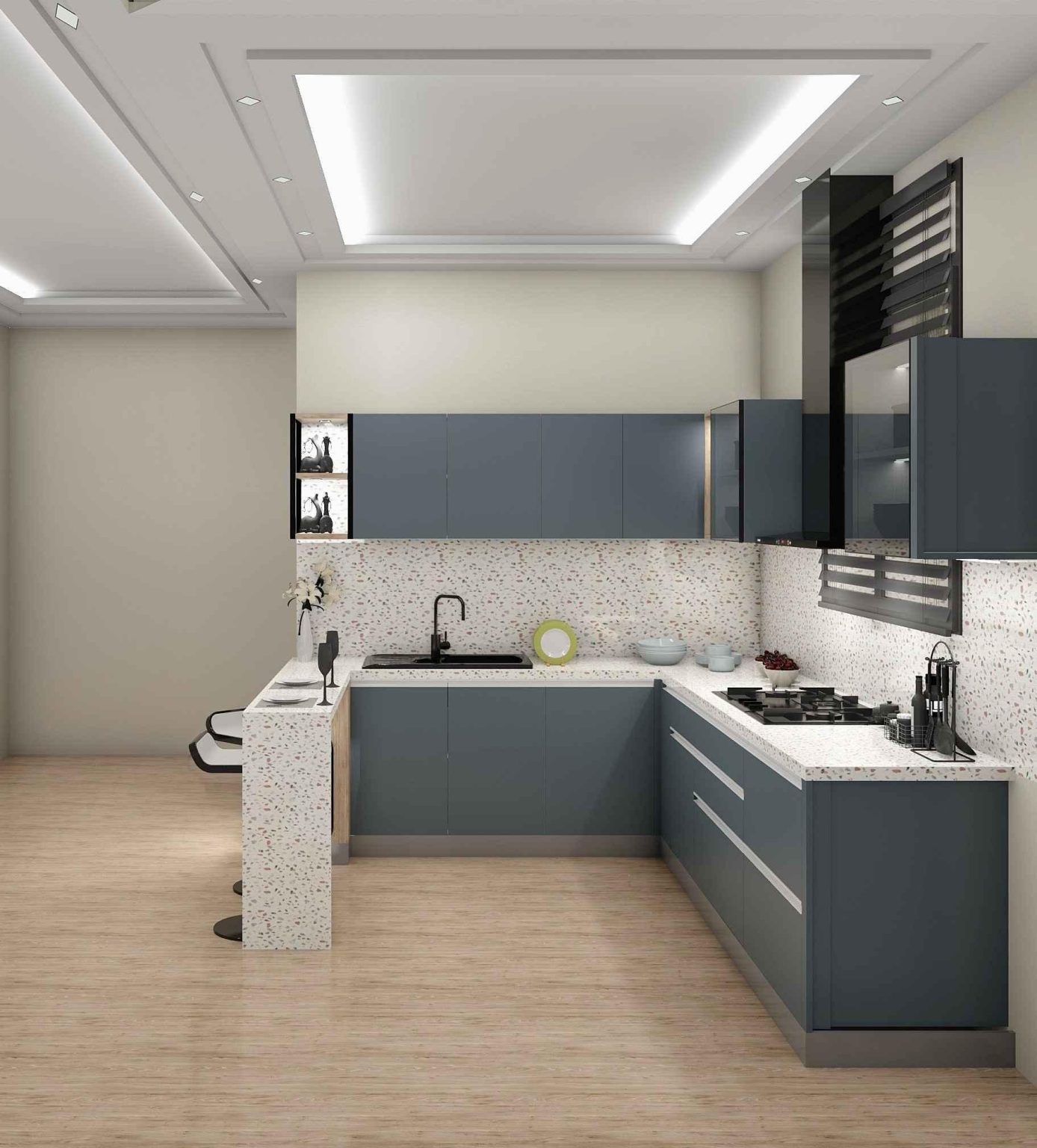In an era where fostering independence and creativity in children is paramount, the kitchen has evolved into more than just a space for meal preparation; it serves as a vibrant classroom for young minds eager to explore the world of cooking. However, designing a kitchen that is both safe and engaging for kids requires careful consideration of various elements that cater to their curiosity while prioritizing their well-being. From age-appropriate tools and materials to thoughtful layout choices that encourage interaction, a children-friendly kitchen can empower kids to participate in culinary adventures, instilling valuable life skills along the way. This article delves into the essential aspects of creating a kitchen environment that balances safety with stimulation, ensuring that little chefs feel welcomed and inspired as they embark on their cooking journeys.
Table of Contents
- Exploring Child-Friendly Layouts and Functional Zones in the Kitchen
- Incorporating Safety Features to Prevent Accidents and Injuries
- Selecting Age-Appropriate Tools and Equipment for Culinary Exploration
- Creating Interactive Learning Opportunities Through Cooking Activities
- Insights and Conclusions
Exploring Child-Friendly Layouts and Functional Zones in the Kitchen

Integrating child-friendly layouts in the kitchen not only ensures safety but also ignites a child’s natural curiosity and creativity. Zoning the space can help manage your child’s activity and encourage independence. Consider creating designated areas such as:
- Cooking Zone: Low countertops and easy-to-reach utensils to engage children in meal prep.
- Crafting Zone: A small table with supplies for art projects that can keep kids entertained while meals are being prepared.
- Snack Station: A low shelf stocked with healthy snacks encourages self-serving and healthy eating habits.
Incorporating safety features into these zones is paramount. Utilize rounded edges on countertops to prevent injuries and install childproof locks on cabinets containing sharp objects. Additionally, having a step stool allows children to reach higher areas safely. Below is a basic layout of a child-friendly kitchen:
| Zone | Features |
|---|---|
| Cooking Zone | Low countertops, accessible utensils |
| Crafting Zone | Table for art projects, craft supplies |
| Snack Station | Healthy snacks, low shelf |
Incorporating Safety Features to Prevent Accidents and Injuries

When designing a kitchen environment for kids, ensuring safety is paramount. One effective way to prevent accidents is by incorporating soft-closing mechanisms on drawers and cabinets, minimizing the risk of pinched fingers. Additionally, consider rounded edges on countertops and tables to reduce injury from bumps or falls. Utilize non-slip mats near wet areas to help prevent slips, and install child-proof locks on high cabinets or those containing sharp objects and hazardous materials. These measures collectively create a safer space for children to explore their culinary interests.
Another essential aspect of a kid-friendly kitchen is the careful selection of appliances and tools. Opt for kid-safe knives with blunt edges designed for children, and employ induction cooktops instead of traditional gas stoves to eliminate the risk of burns or flare-ups. It’s beneficial to establish clearly defined cooking zones where kids can participate in food preparation under supervision. Consider a table layout structured as follows:
| Item | Safety Feature |
|---|---|
| Knives | Kid-safe design |
| Stoves | Induction for burn prevention |
| Countertops | Padded edges |
| Flooring | Non-slip material |
By integrating these safety features into the kitchen design, you not only foster a creative and engaging environment for children but also ensure their wellbeing, allowing them to enjoy their time spent cooking and learning without undue concern for hazards.
Selecting Age-Appropriate Tools and Equipment for Culinary Exploration
When embarking on a culinary journey with young chefs, selecting tools and equipment that match their developmental stages is crucial for fostering confidence and creativity in the kitchen. Consider introducing age-appropriate utensils that can help children engage with cooking while ensuring their safety. For younger children, lightweight silicone spatulas, plastic measuring cups, and non-sharp cutters can empower them to participate actively without the risks associated with heavier or sharper tools. As children grow, transitioning to sturdier items like metal measuring spoons or small knives designed for safe use encourages the development of more complex skills.
Organizing the kitchen space to accommodate various age groups can optimize the culinary experience. Establish zones within the kitchen, ensuring tools are categorized based on function and safety. A sample setup might include:
| Age Group | Recommended Tools |
|---|---|
| 3-5 years | Plastic utensils, safe chopping tools |
| 6-8 years | Child-safe knives, measuring cups |
| 9-12 years | Standard kitchen knives, grater |
With this thoughtful approach, children can explore the joys of cooking while learning essential skills, all within a safe and inviting environment.
Creating Interactive Learning Opportunities Through Cooking Activities
Cooking activities can transform learning into an engaging experience by merging creativity with fundamental skills. When designing a kid-friendly kitchen, consider incorporating elements that stimulate curiosity and encourage exploration. For example, create dedicated stations for various tasks, such as measuring, mixing, and decorating, to allow children to participate hands-on. This structured layout supports the following benefits:
- Hands-on Skills: Children practice basic cooking techniques and develop fine motor skills.
- Critical Thinking: Recipes challenge kids to follow instructions and make decisions.
- Science in Action: Learning about measurements and transformations during food preparation.
To ensure a safe environment while sparking curiosity, equip the kitchen with age-appropriate tools and safety gear. Establish ground rules that promote responsibility and respect for the kitchen space. Additionally, consider creating a simple checklist for each session, which can help children understand their tasks and the importance of each step in the cooking process.
| Kitchen Tool | Age Group | Safety Tip |
|---|---|---|
| Plastic knives | 4-6 years | Supervise cutting tasks. |
| Measuring cups | 5-7 years | Teach proper measuring techniques. |
| Stirring spoons | 3-5 years | Use large, sturdy spoons to avoid spills. |
Insights and Conclusions
designing a safe and engaging kitchen for kids is a multifaceted endeavor that requires careful consideration of both safety and creativity. By incorporating child-friendly materials, intuitive layouts, and engaging elements, parents and caregivers can transform the kitchen into a vibrant space that encourages exploration, learning, and culinary creativity. Utilizing safety features such as rounded edges, non-slip flooring, and accessible storage not only mitigates potential hazards but also fosters a sense of independence and responsibility in young minds. As children actively participate in cooking and meal preparation, they develop essential life skills, nurture a love for healthy eating, and create lasting memories with family. Ultimately, a well-designed kitchen can serve as a hub of activity and growth, cultivating an environment where children feel empowered to express themselves while learning the importance of safety and responsibility in the kitchen. By prioritizing thoughtful design, we can inspire the next generation of young chefs to thrive in an engaging and secure culinary space.



